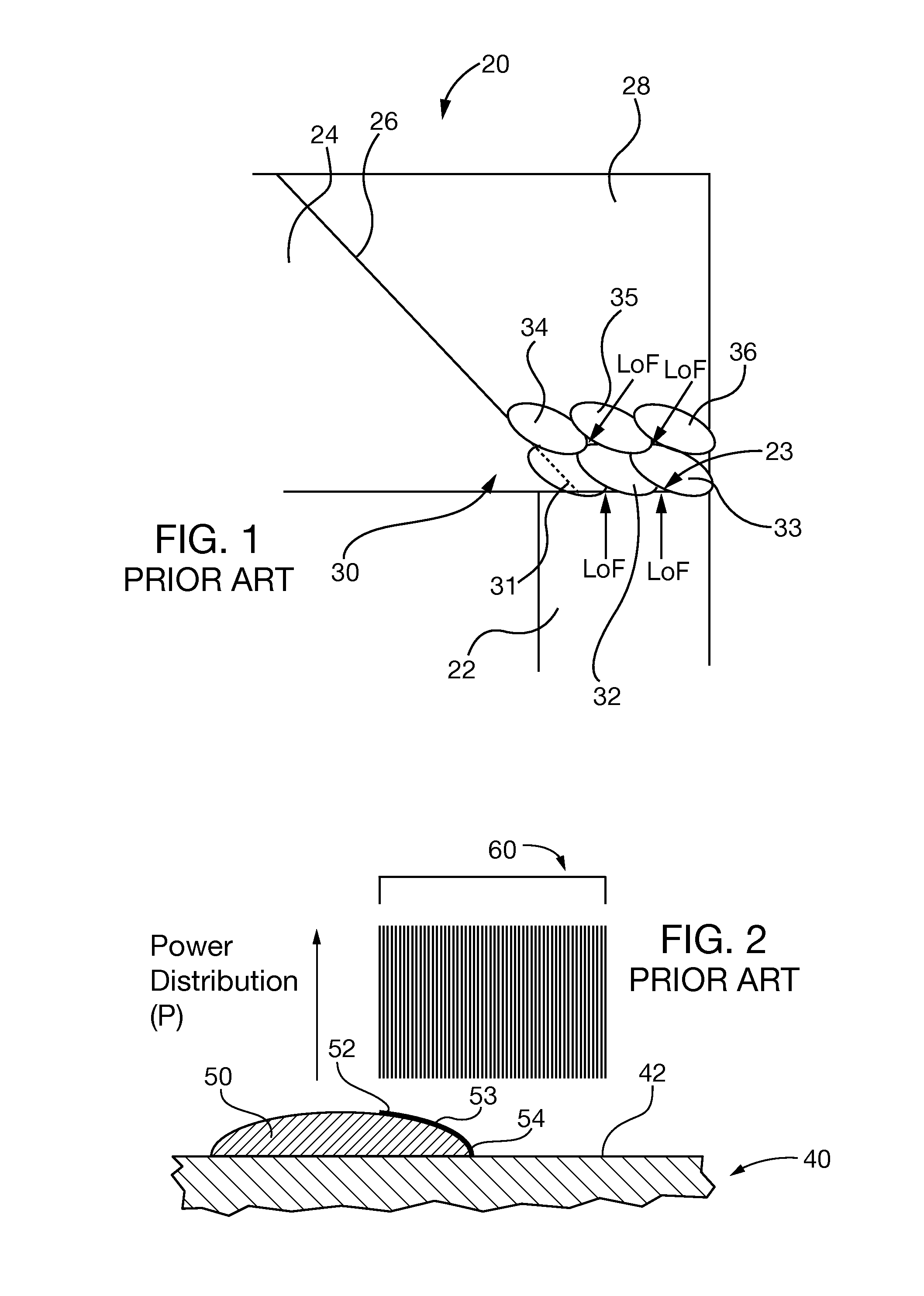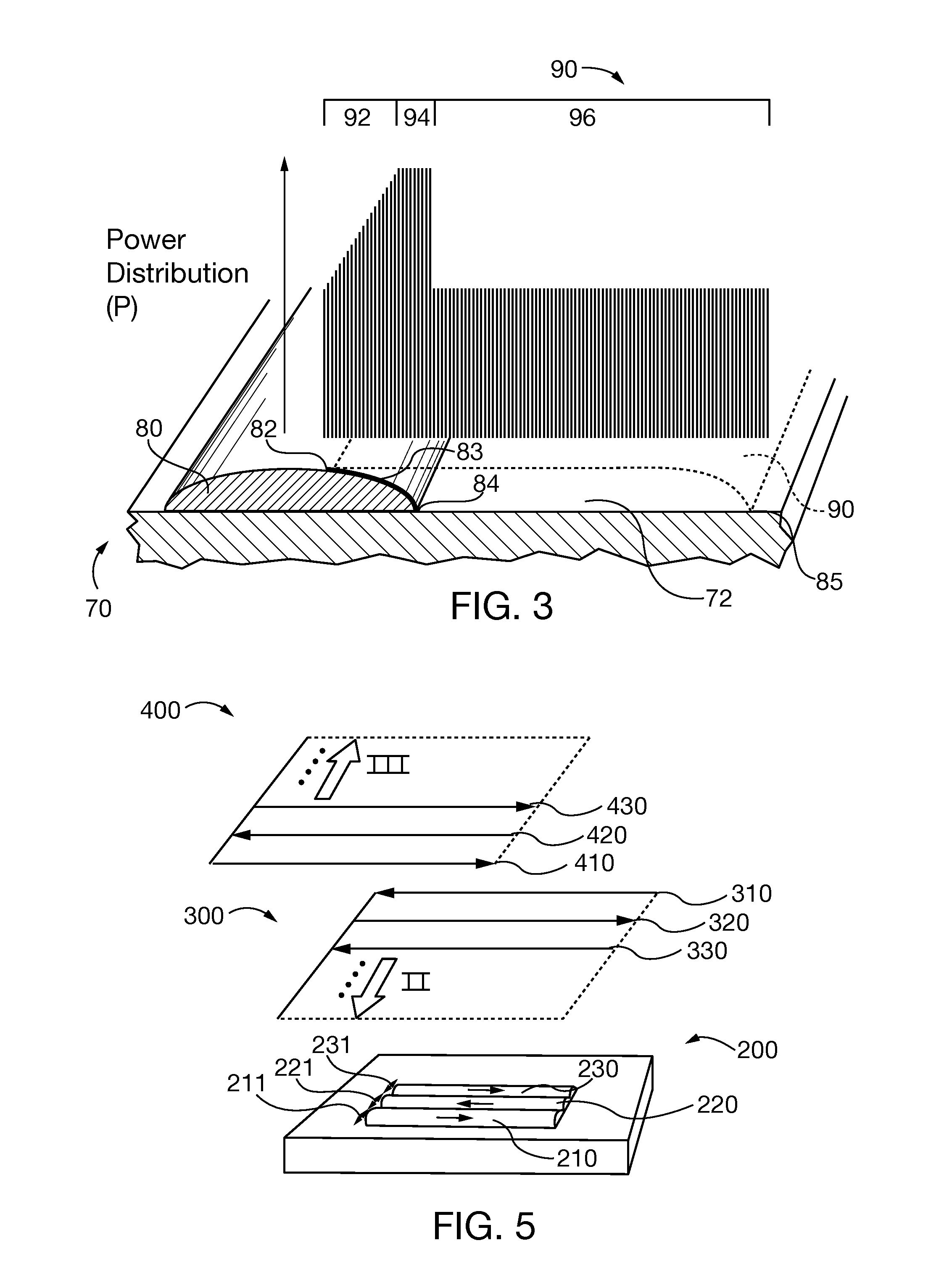Superalloy laser cladding with surface topology energy transfer compensation
a superalloy and surface topology technology, applied in the direction of machines/engines, manufacturing tools, turbines, etc., can solve the problems of difficult subsequent structural welding, difficult to repair nickel and cobalt based superalloy materials used in turbine components, and blades are susceptible to solidification, so as to achieve the effect of not degrading the structural properties of the component substra
- Summary
- Abstract
- Description
- Claims
- Application Information
AI Technical Summary
Benefits of technology
Problems solved by technology
Method used
Image
Examples
Embodiment Construction
[0035]After considering the following description, those skilled in the art will clearly realize that the teachings of the invention can be readily utilized in repair of superalloy components, such as turbine blades and vanes, by a laser beam welding method that promotes bonding of the superalloy substrate to one or more cladding layers without substrate thermal degradation. The present invention laser cladding methods vary laser optical energy transfer rate to compensate for localized substrate topology variations, so that the energy transfer to the filler and substrate remains uniform during a welding pass.
[0036]Sufficient laser optical energy is transferred to the welding filler material and underlying substrate to assure filler melting and adequate substrate surface wetting for good fusion. However, energy transfer is maintained below a level that jeopardizes substrate thermal degradation. Optical energy transfer to the filler and substrate is maintained uniformly as the laser b...
PUM
| Property | Measurement | Unit |
|---|---|---|
| optical energy | aaaaa | aaaaa |
| optical energy transfer | aaaaa | aaaaa |
| optical energy transfer rate | aaaaa | aaaaa |
Abstract
Description
Claims
Application Information
 Login to View More
Login to View More - R&D
- Intellectual Property
- Life Sciences
- Materials
- Tech Scout
- Unparalleled Data Quality
- Higher Quality Content
- 60% Fewer Hallucinations
Browse by: Latest US Patents, China's latest patents, Technical Efficacy Thesaurus, Application Domain, Technology Topic, Popular Technical Reports.
© 2025 PatSnap. All rights reserved.Legal|Privacy policy|Modern Slavery Act Transparency Statement|Sitemap|About US| Contact US: help@patsnap.com



